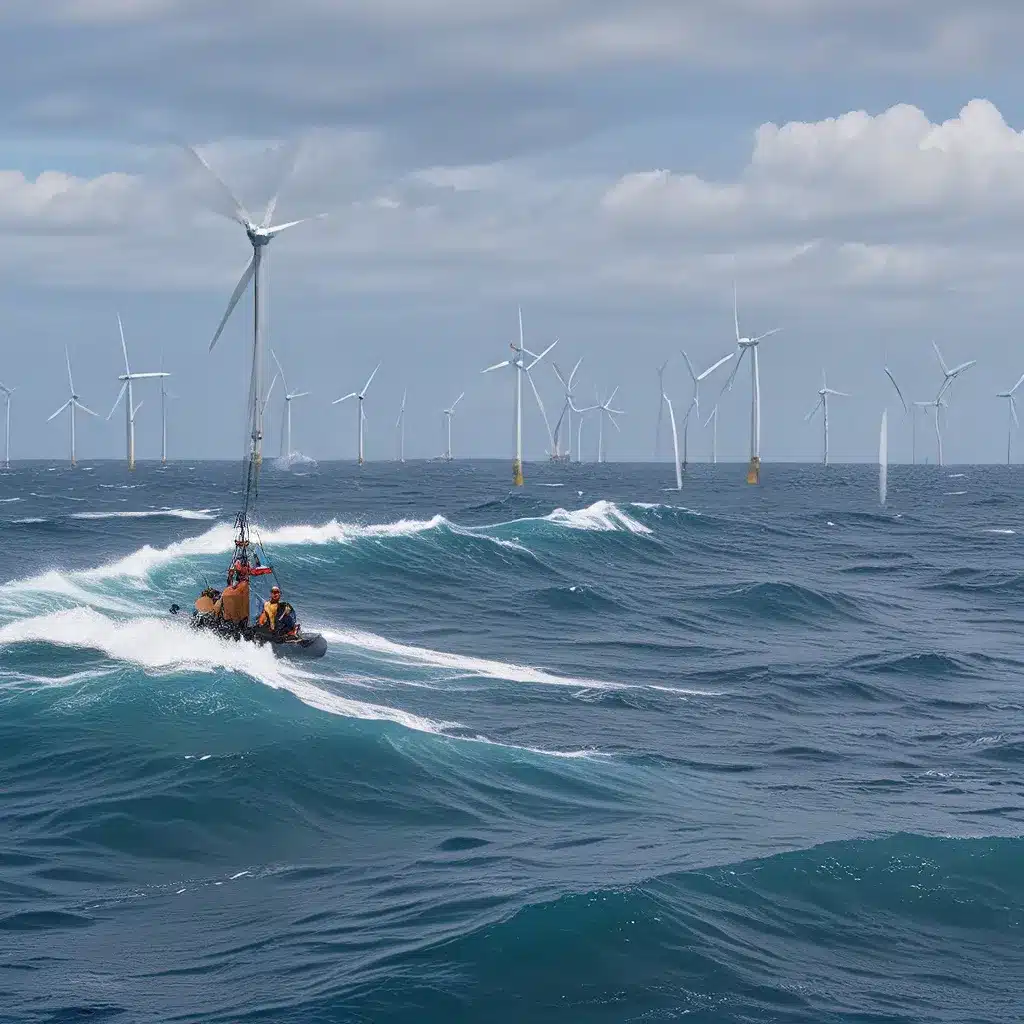
As an avid explorer of the natural world, I’ve always been fascinated by the untapped potential of our oceans. Sure, we’ve all heard about the wonders of solar and wind power, but have you ever considered the incredible energy that’s just waiting to be harnessed from the waves, tides, and currents of the open seas? This is the world of marine energy, and it’s about to become a game-changer in the renewable energy landscape.
Unleashing the Power of the Oceans
Let’s start with the basics: marine energy is a form of renewable power that’s generated from the natural movement of water, including waves, tides, and even the temperature differences between the ocean’s surface and its depths. And let me tell you, the potential is astounding. According to the U.S. Department of Energy, the total available marine energy resource in the United States is equivalent to approximately 57 percent of all U.S. power generation in 2019. That’s a staggering figure, and it’s just the tip of the iceberg.
But it’s not just about the sheer scale of the resource; it’s also about the unique characteristics of marine energy that make it such an attractive option. For one, these resources are highly predictable, with daily and seasonal cycles that make them an excellent complement to other renewable sources like wind and solar. Imagine being able to plan your energy production with near-certainty, rather than relying on the whims of the weather.
Another advantage is that most marine energy technologies are submerged or located out at sea, meaning they can generate clean energy while maintaining the beauty of our coasts and waterways. No more unsightly turbines or solar panels cluttering up the landscape – just the peaceful ebb and flow of the oceans, powering our homes and businesses.
Harnessing the Tides and Currents
Now, let’s dive a little deeper (pun intended) into the different types of marine energy technologies. One of the most promising is tidal and current energy, which harnesses the kinetic energy of the ocean’s tides and currents using underwater turbines. These turbines are designed to spin as the water moves past them, generating electricity in much the same way as a wind turbine.
But the beauty of tidal and current energy is that it’s highly predictable, thanks to the well-understood cycles of the tides. This makes it an ideal complement to other renewable sources that may be more variable, like solar and wind. And the potential is enormous – the U.S. Department of Energy estimates that just a small portion of the country’s available tidal and current energy resources could make a significant contribution to the nation’s energy needs.
Riding the Waves of Innovation
But tidal and current energy is just one piece of the marine energy puzzle. Another exciting area is wave energy, which harnesses the up-and-down and back-and-forth motion of the waves to generate electricity. Wave energy converters come in all shapes and sizes, from floating buoys to submerged devices that capture the kinetic energy of the waves.
And the innovation in this space is truly breathtaking. The National Renewable Energy Laboratory and Mystic Aquarium have teamed up to create a series of animated videos that explain the different marine energy technologies, making it easier for the public to understand and get excited about these cutting-edge solutions.
But it’s not just about the technology itself – it’s also about the broader implications for the blue economy, the vast and untapped economic potential of our oceans. By harnessing the power of the seas, we can not only generate clean, renewable energy, but also power a whole host of other industries, from desalination systems for clean water to advanced ocean exploration and research.
Embracing the Blue Future
And let’s not forget the environmental benefits of marine energy. Unlike fossil fuels, these technologies produce zero emissions and have a minimal impact on the delicate marine ecosystems. In fact, some experts believe that the integration of marine energy into the broader renewable energy mix could actually improve the health of our oceans, by reducing the demand for extractive industries and providing new habitats for marine life.
But of course, as with any emerging technology, there are still challenges to overcome. The costs of developing and deploying these systems can be high, and there are still questions about their long-term reliability and scalability. And let’s not forget the policy and regulatory hurdles that need to be navigated, as we work to integrate these new energy sources into our existing infrastructure.
But I’m optimistic. I can see the potential, the excitement, and the sheer ingenuity that’s being poured into this field. And as we continue to invest in research and development, I believe that we’ll see a rapid acceleration in the adoption of marine energy technologies, transforming the way we power our world and ushering in a new era of sustainable, blue-powered prosperity.
So, what are we waiting for? Let’s dive in (again, pun intended) and start harnessing the power of the oceans to create a cleaner, greener, and more prosperous future for all. And who knows – maybe one day, your home or business will be powered by the very waves that you love to watch crash against the shore. The future is blue, and it’s ours for the taking.
By the way, if you’re interested in exploring the world of renewable energy solutions, be sure to check out Firewinder – they’re doing some really exciting work in this space.

